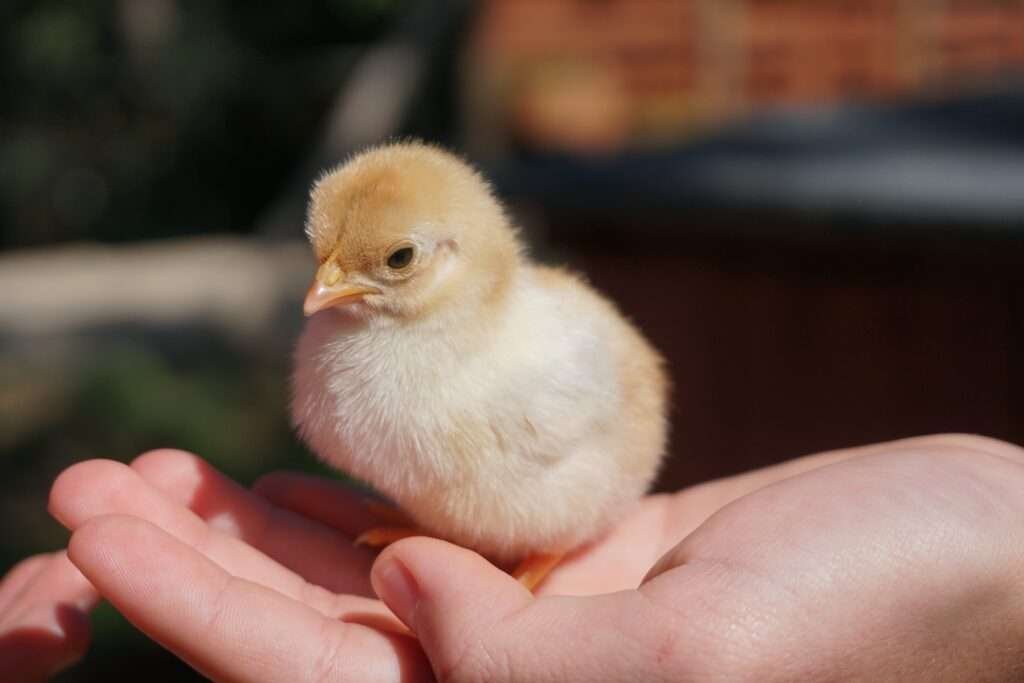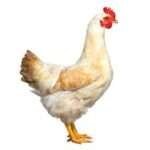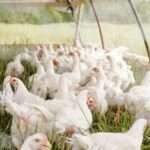
Welcome to the world of breeding chickens! Whether you’re interested in increasing your egg production, raising meat birds, or breeding a specific chicken type, this beginner’s guide will provide you with all the essential information to get started on your exciting journey into chicken breeding.
Breeding chickens can be a rewarding and fulfilling experience, but it requires careful planning, dedication, and responsible practices. Before diving into the breeding process, it’s crucial to understand the basics and what to consider as a beginner breeder. Whether you’re a small-scale backyard enthusiast or aspiring to become a professional breeder, this guide will equip you with the knowledge you need to succeed.
Understanding the Basics of Chicken Breeding
Breeding chickens involves the art and science of producing offspring with specific traits, whether it’s to improve egg-laying abilities, enhance meat production, or preserve the characteristics of a particular breed. To achieve successful breeding outcomes, you must start with healthy parent stock.
Selecting breeding candidates is the foundation of your breeding program. Look for chickens that exhibit desirable traits, such as good health, strong egg-laying or meat-producing abilities, and excellent temperament. Avoid breeding birds with genetic defects or known health issues, as these can be passed on to the offspring.
Another critical consideration is the method of breeding you’ll use. Natural mating is the traditional way where roosters mate with hens. Alternatively, artificial insemination is a technique employed for specific breeding objectives, especially in commercial settings or when managing certain breeds’ genetics.
Breeding for Egg Production
If your primary goal is to increase egg production, selecting the right breeds is essential. Certain chicken breeds are renowned for their excellent egg-laying abilities, such as Leghorns and Rhode Island Reds. These breeds are dependable layers, and their eggs are highly prized for their quality.
Several factors affect egg production, including lighting, nutrition, and environmental conditions. Hens require approximately 14 to 16 hours of daylight to maintain consistent egg-laying throughout the year. Adequate nutrition, including a balanced diet rich in calcium, is crucial to support eggshell production.
Managing broodiness is also a consideration for egg production. Some breeds tend to go broody (become motherly) and stop laying during this period. To maintain consistent egg production, you’ll need to manage broodiness effectively or select breeds with low broodiness tendencies.

Breeding Chickens for Meat Production
Raising meat birds is another aspect of chicken breeding that requires careful consideration. The Cornish Cross and Broilers are popular meat-producing breeds due to their rapid growth rates and efficient feed conversion.
When breeding for meat production, focus on selecting birds that grow quickly and efficiently convert feed into muscle mass. Providing proper nutrition and housing is crucial for promoting healthy growth. It’s also important to have a humane processing plan in place once the birds reach the desired weight.
Breeding Specific Chicken Types
As a beginner chicken breeder, you might also be interested in preserving or enhancing the characteristics of a particular chicken breed. Breeding specific chicken types requires a deeper understanding of the breed’s standard and the traits you want to improve.
First, research the breed standard for the chicken type you wish to breed. The breed standard outlines the ideal physical characteristics, such as color, size, shape, and feather patterns, that define the breed. Select breeding candidates that closely conform to the breed standard, as this will increase the likelihood of producing offspring with the desired traits.
To maintain genetic diversity within the breed, avoid excessive inbreeding. Inbreeding can lead to undesirable genetic traits and health issues. Instead, consider bringing in new bloodlines from reputable breeders or hatcheries to maintain genetic variation.
Having a clear breeding goal is essential for breeding specific chicken types. Determine the traits you want to enhance or preserve and develop a breeding plan accordingly. Keep accurate records of the breeding process, including lineage, hatch dates, and observed traits, to track progress and make informed breeding decisions.
Creating a Breeding Plan
Before you start breeding, it’s crucial to have a well-thought-out breeding plan in place. A breeding plan outlines your goals, the breeds you’ll be working with, the number of breeding pairs, and the timeline for the breeding program.
Consider the space and resources available to you for breeding. Breeding chickens require separate breeding pens to ensure controlled mating and egg collection. Adequate space will also prevent stress and aggressive behavior among the birds.
Plan for the breeding season, considering factors such as the weather and natural daylight cycles. Chickens generally breed more successfully during the spring and summer months when daylight hours are longer.
Determine the number of breeding pairs based on your goals and the size of your flock. It’s advisable to start with a small number of breeding pairs, especially as a beginner, to manage the breeding process effectively.

Equipment for Breeding Chickens
To establish a successful breeding program, you’ll need to invest in some essential equipment and create suitable facilities for the breeding process. Here are some key items to consider:
a. Incubators: Incubators are vital for hatching fertile eggs. Depending on the scale of your breeding program, you can choose from small manual incubators to large, fully automated models. Opt for a reliable incubator that maintains a stable temperature and humidity level, as consistent conditions are crucial for successful hatching. Regularly check and calibrate your incubator to ensure accurate temperature and humidity readings.
b. Separate Breeding Pens: To control mating and prevent aggressive behavior, you’ll need separate breeding pens for your roosters and hens. Breeding pens should be spacious enough to accommodate the breeding pair comfortably. Provide nesting boxes and suitable roosts to ensure the well-being of your birds. It’s essential to keep your breeding pens clean and hygienic to minimize the risk of disease transmission.
c. Nursery Area: Once the chicks hatch, they’ll require a safe and nurturing environment. Designate a nursery area for the newly hatched chicks, commonly known as the brooder. A brooder can be a simple enclosure with a heat lamp or a more elaborate setup with a brooder box. The brooder should be kept warm (around 95°F or 35°C) during the first week, and the temperature can gradually decrease as the chicks grow older. Provide fresh water and chick starter feed, and closely monitor their health and development during this critical stage.
Raising Chicks to Pullets: Considerations and Care
Successfully raising chicks into healthy pullets requires careful attention and proper care. Here are some essential considerations for this important phase:
a. Nutrition: Provide your growing chicks with a balanced and nutritious diet. Commercial chick starter feed is specially formulated to meet the nutritional needs of young chicks. Ensure a constant supply of clean water to keep them hydrated. As they mature, transition them to grower feed and then to layer feed when they reach laying age.
b. Housing: As the chicks grow, they’ll require more space. Consider moving them to a larger coop or enclosure suitable for pullets. Ensure the coop is secure, predator-proof, and well-ventilated. Provide nesting boxes for the pullets to lay their eggs once they reach maturity.
c. Socialization: Chickens are social animals and thrive in the company of their flock. Introduce the young pullets to the rest of your flock gradually. Supervise their interactions to prevent bullying or aggression from older birds. In some cases, you may need to keep the pullets separated from the rest of the flock until they are fully integrated.
d. Health Care: Regularly monitor the health of your pullets and address any signs of illness promptly. Keep the coop clean and free of pests to prevent the spread of diseases. Establish a vaccination and deworming schedule to maintain their optimal health.
By providing your chicks with proper nutrition, a suitable environment, and attentive care, you’ll ensure they develop into healthy and productive pullets ready to join your laying flock.

Responsiblities for Breeding Chickens
As a responsible chicken breeder, prioritize the health and well-being of your birds. Regularly inspect your breeding stock for signs of illness, and promptly address any health issues that arise. Provide a clean and hygienic environment to minimize the risk of disease transmission.
Avoid overbreeding your chickens, as this can lead to stress and reduced egg production. Give your breeding hens sufficient rest periods between broods to maintain their health and vitality.
Egg incubation is an integral part of the breeding process. Invest in a reliable incubator and follow proper incubation procedures to ensure a high hatch rate. Monitor the development of the embryos closely and provide proper care to the newly hatched chicks.
To Sum it All Up
Breeding chickens can be a rewarding endeavor that allows you to play an active role in the conservation and improvement of chicken breeds. As a beginner, take the time to research and plan your breeding program carefully. With dedication, patience, and responsible breeding practices, you can successfully breed chickens that meet your specific goals and contribute positively to the poultry community.






